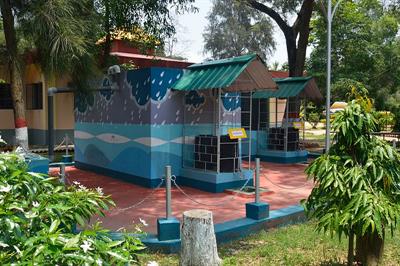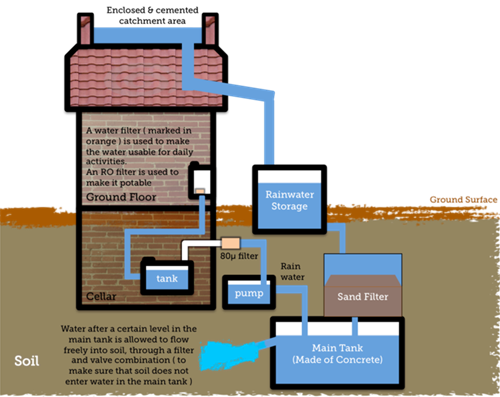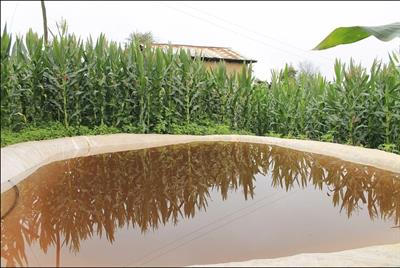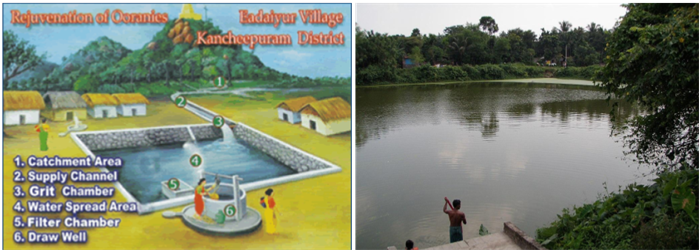PDF chapter test TRY NOW
Using water daily is something that all of us do. Water is used for many essential things like drinking, cleaning, and watering plants. Some of us use water in excess for many reasons that affect the availability of freshwater.
Water conservation is the preservation, control and management of water resources.
Water conservation is a strategy that entails activities designed to manage water as a sustainable resource. It also covers actions aimed at safeguarding the hydrosphere and meeting existing and future water demands.
Importance of water conservation:
1. Water conservation allows for more effective use of water resources.
2. Water conservation ensures that we have enough usable water.
3. Water conservation aids in the reduction of water pollution.
4. Water conservation helps in increasing energy saving.
There are various measures in the conservation of water. Let us see what rainwater harvesting is and how it is done.
Rainwater harvesting:
Water obtained through rain generally flows away as surface runoff. Rainwater can be saved and is used to replenish the groundwater levels of the earth.
Rainwater harvesting is a technique of collecting and storing rainwater for future use.
It can also be defined as:
The process of preventing the rainwater from flowing away and storing it for different purposes is called rainwater harvesting.
It is a traditional way of storing rainwater in underground tanks, lakes, ponds, and check-dams to be used in the future. The primary goal of rainwater harvesting is to allow the rainwater to percolate into the ground to replenish or recharge the "groundwater level".
Various methods of rainwater harvesting:
1. Rooftop rainwater harvesting:
Rooftops are good rain catchers. The rainwater falling on the roofs of houses, apartments, commercial buildings, and other structures is collected and stored in a surface tank to be used for domestic purposes.

Rooftop rainwater harvesting
2. Recharge pit:
This method collects rainwater from rooftops or open spaces and filters before being routed into percolation pits via pipes. Rainwater is filtered before entering recharge pits or ground wells.

Rainwater harvesting
People living in rural areas use various methods to collect, capture, store and conserve rainwater. The following are a few of the techniques that have been used:
1. Digging of tanks or lakes (Eris):
It is one of the traditional methods of water harvesting system in Tamil Nadu. Eris is constructed so that if one eri's water overflows, it automatically gets diverted to the eri of the next village, as eris are interconnected.

Eri
2. Ooranis:
Ooranis are small ponds where you can collect rainwater. The rainwater collected can be employed in a variety of domestic applications such as:
- Drinking
- Washing
- Bathing
These ponds provide water to the people that live in the nearby villages.

Advantages of rainwater harvesting:
1. Rainwater harvesting overcomes the rapid depletion of groundwater levels.
2. Rainwater harvesting helps to meet the rising freshwater demand.
3. Rainwater harvesting lowers the risk of flooding and soil erosion.
4. Water stored in the ground is not contaminated by human or animal wastes and can thus be utilised for drinking.
Reference:
https://commons.wikimedia.org/wiki/File:Simple_Diagram_to_show_Rainwater_Harvesting.png
https://upload.wikimedia.org/wikipedia/commons/thumb/0/04/Rainwater_Harvesting_Pond.JPG/1024px-Rainwater_Harvesting_Pond.JPG
https://upload.wikimedia.org/wikipedia/commons/thumb/c/cd/Big_Pond_-_Manosapota_Village_-_Simurali_2011-10-05_050345.JPG/1024px-Big_Pond_-_Manosapota_Village_-_Simurali_2011-10-05_050345.JPG
